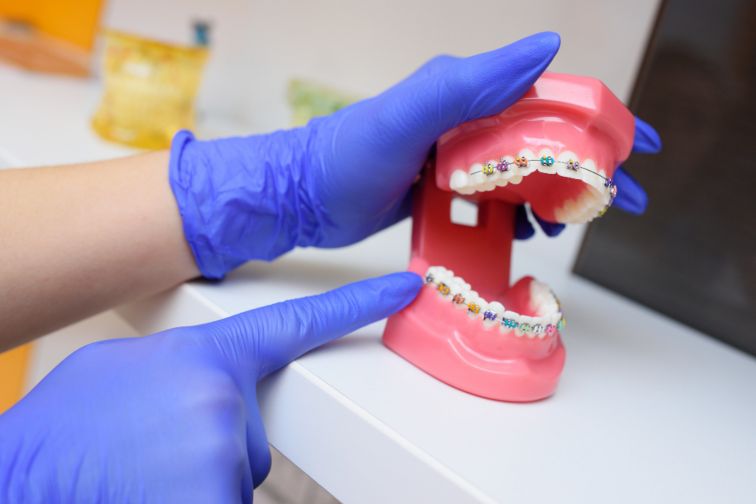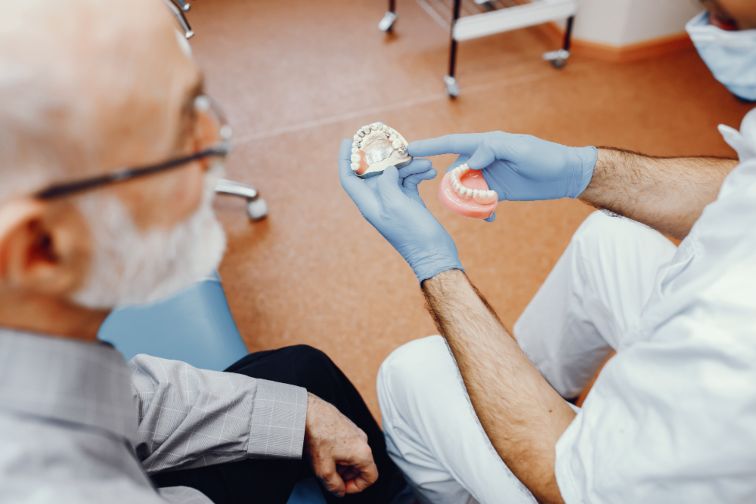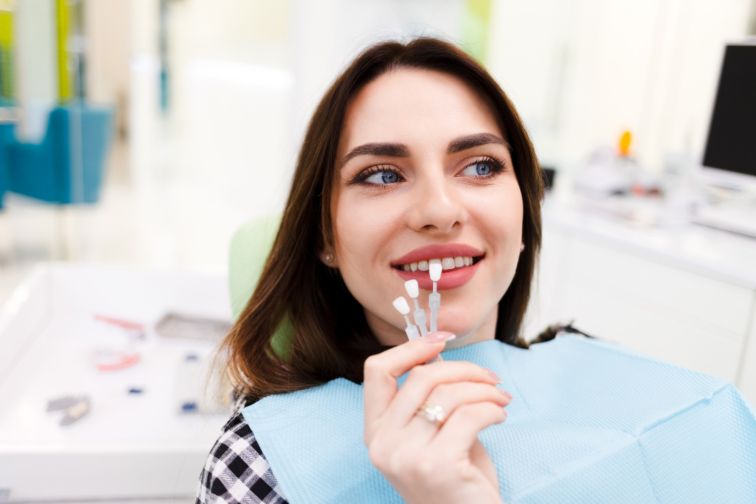In most cases, dental patients are more concerned about the condition of their teeth, rather than their position. Common orthodontic issues like cavities, tooth decay, and sensitivity are often the main concerns, but can a position of teeth cause problems? Yes, it can. The most common problem regarding the position is overjet teeth.
An overjet is a dental condition when the upper teeth go outward and sit over the bottom teeth. This can be a bit nasty because it can affect a person’s appearance and mouth aesthetics. A more pressing issue, however, is the fact that overjet can cause difficulties when it comes to chewing, drinking, and biting. In some severe cases, it may even cause jaw pain.
Like with many dental issues, some overjets are mild, while other cases can be severe. Other than the already mentioned problems with biting and chewing, the poor teeth alignment can make it difficult for a patient to close their lips.
In some rare cases, people can develop speech problems, or even bite their tongue or the inside of your cheek on a regular basis.
Even though these things sound pretty bad, it’s perfectly normal for the upper front teeth to rest slightly in front of the lower teeth when a patient closes their mouth. The usual space between the upper and lower teeth is 2 millimetres. However, if the person’s upper front teeth extend the lower by more than 2mm, then the patient has overjet teeth.

It’s safe to say that there’s not only one thing that causes an overjet. There are plenty of different factors that can contribute to this specific dental condition.
In some cases, an overjet is a hereditary issue. Therefore, if one of the patient’s parents has it, the patient might have one, too. This condition can also occur if a person has an underdeveloped and weaker lower jawbone. This causes the upper teeth to protrude further than they should. This is one of the most common causes of overjet teeth.
However, genetics is just one of the causes. For example, an overjet can also occur if a person had a habit of sucking their thumb as a kid. It seems unlikely, but it’s true.
Also, letting a baby use a pacifier for an extended period can contribute to this condition. So, parents, beware.
A lot of people tend to get confused when it comes to the overjet teeth vs overbite question or they think that it’s the same thing. However, while similar, they’re different dental conditions.
Both of them share one characteristic and that’s the fact that the upper teeth are sitting over or in front of the bottom teeth. But when it comes to an overjet, the upper teeth protrude past the bottom teeth at a specific angle.
With an overbite, on the other hand, there is no angle. The upper teeth protrude past the bottom teeth, but they remain straight or downward. The overbite condition is also known as buck teeth. Interestingly enough, both of these issues are related to sleep apnoea and snoring, but fortunately, they are easily fixed with simple orthodontics treatments.

Unfortunately, the answer is yes. In most cases, the overjet will get worse over time, if left untreated, of course.
It is crucial for a patient to correct their overjet in time if they want to have healthy and good-looking teeth. The best way to fix this dental issue is to tackle it early. Best results are reserved for those patients who begin their treatment at the age of 7. Again, parents, beware.
However, this doesn’t mean that teenagers and adults can’t correct their overjets. It might take a little bit more work, but it’s doable.
The fact that overjet teeth can be fixed is good news. Especially for those people whose confidence is suffering due to the look of their teeth. The only thing left is to find a way to fix them. Fortunately for all patients dealing with this issue, there is more than one way to fix overjet teeth.
It’s safe to say that dental braces are a pretty common occurrence. Even people who haven’t worn dental braces have seen someone wear them. This device is known for fixing all kinds of teeth-related issues, like crooked teeth, for example. But, can braces fix overjet teeth?
Yes, it can.
Most dental braces are designed to straighten and align the patient’s teeth by slowly and painlessly shifting them into a new location. There are many different types of braces a patient can use to remedy this condition, but traditional metal braces and removable clear aligners are the best options.
The thing most patients want to know is how long they will have to wear braces. There is no definitive answer to this question because the time frame depends on the severity of the overjet. In most cases, patients have to wear overjet teeth braces for about 18 to 24 months.
The dental bonding procedure has a more aesthetic purpose. The dentist uses a composite resin to change the shape and size of a patient’s teeth. This makes overjet teeth less obvious.
The resin is strong like natural teeth and the bonding can last for a few years. This is good for two reasons - the patient doesn’t have to go to the dentist’s office that often (what a relief) and it’s good for the patient’s wallet.
Dentists use Invisalign to treat minor malocclusions, usually in teenagers and adults. The dentist makes a series of clear plastic aligners from a mould of a patients teeth and puts them over the teeth to slowly and painlessly change their position.
This device is similar to braces, but it’s more subtle. Also, Invisalign costs a bit more than traditional braces, but it saves the patient a few trips to the dentist’s office.

Some dentists tend to treat an overjet with veneers. This is a piece of porcelain that a dentist attaches to the front surface of a patient’s teeth. The porcelain is usually custom-made and it mimics the natural look of a patient’s teeth.
Veneers are good for hiding or masking misaligned teeth and other similar flaws. Porcelain veneers can last about 10 to 15 years and cost about $925 to $2,500 per tooth. This is a pricey procedure, no question about it, but once it’s done, a patient doesn’t have to worry about their overjet teeth for a long time.
A dental cap or crown is a prosthetic that dentists use to cover the entire surface of a patient’s tooth. Just like the veneer, it is custom-made and it can make the overjet teeth appear straight.
Crowns can last about 5 to 15 years.
Retainers are very similar to braces. However, unlike braces, retainers are not glued or fixed to a patient’s teeth. A retainer is a piece of moulded plastic that has to be put on the roof of a patient’s mouth. Once a patient does this, a thin wire covers the front teeth and puts mild pressure on them. Retainers are used for minor issues. Dentists recommend that patients wear retainers for about 2 to 3 months and usually only at night.
One of the main advantages of a retainer is that the patient can remove it when they want to eat or brush their teeth.
It should be noted that surgery is usually the last resort. People who have severe issues simply can’t straighten their teeth with braces or retainers and they have to undergo jaw surgery. This is an expensive and complicated procedure. Fortunately, most people have minor issues when it comes to overjet teeth and surgery is usually not required.
It’s important for people to know that having overjet teeth is not a threatening dental condition. In some severe cases, it can be painful, but that’s about it. However, aesthetically speaking, overjet teeth should be fixed.
Straightening a person’s teeth is one of the simplest things in dentistry, but only if the patient starts their treatment on time. Best case scenario - before the age of 7. Most treatments (except surgery) are painless and that should be an encouraging piece of information for all the people out there who are self-conscious about their teeth.
Everyone deserves a beautiful smile.

